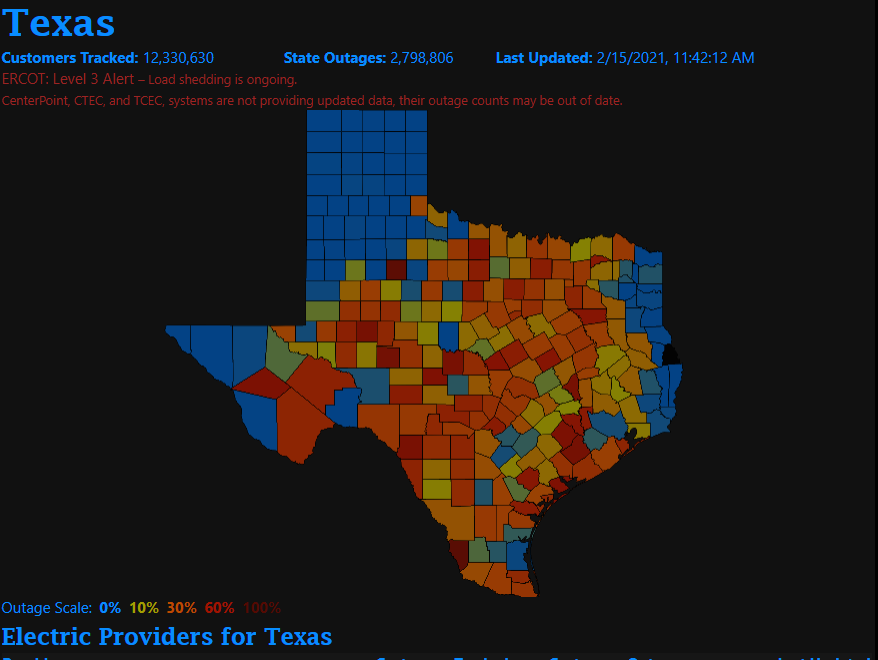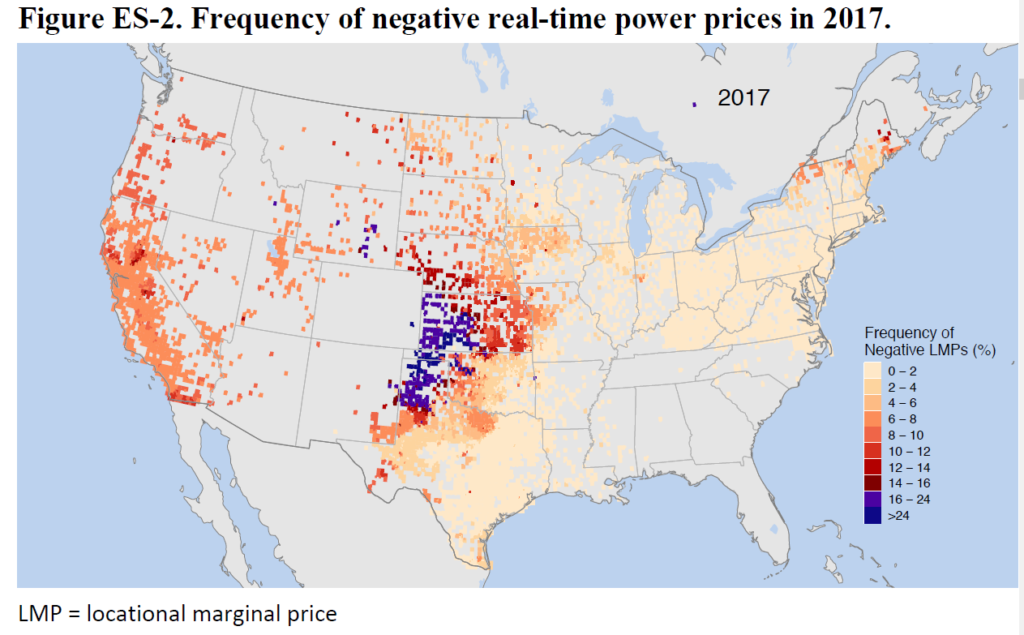Texas: Winter weather, iced wind turbines, and rolling blackouts
More than 2.5 million people in Texas are currently experiencing rolling blackouts as temperatures remain in the single digits in many parts of the state. The Lone Star state is currently short of electricity because half of the Texas wind fleet (the largest in the nation) is iced over and incapable of generating electricity. Additionally, the natural gas infrastructure Texas has become so reliant upon has also frozen up.
Texas’s experience highlights the perils of becoming overly reliant upon wind, solar and natural gas because these energy sources are not as reliable as coal or nuclear power during extreme weather conditions. Nuclear and coal plants have a distinct advantage in extreme weather conditions because they store week’s or month’s worth of fuel near the power plant.
In contrast, wind and solar depend upon the weather, and natural gas relies upon just-in-time delivery of natural gas via pipeline. Problems with the pipeline network result in issues with natural gas plants and home heating systems. The frigid temperatures in Texas have resulted in nearly 2.8 million power outages, according to the map below.

How Did We Get Here?
Renewable energy advocates will try their best to deflect blame away from the role wind and solar have played in the blackouts. To be sure, wind and solar are not solely to blame for the problems Texas is experiencing, but they have contributed to the lack of reliable electricity capacity far beyond the scope of the frozen wind turbines and snow-covered solar panels that are currently generating most of the headlines.
Subsidized Wind Erodes Wholesale Markets
The main way in which wind is responsible for the rolling blackouts, in my opinion, is the wind production tax credit’s (PTC) effect on wholesale power prices. Texas’s electricity system is regulated very differently from the way it is in Minnesota, where government-approved monopoly utility companies and electric co-ops provide most of the electricity used by consumers.
The Minnesota Public Utilities Commission requires these entities to have enough reserve capacity online to ensure the power stays on during extreme circumstances. Wind and solar make it even more imperative to have backup capacity online, but this capacity comes at a cost, which is why we have seen our electricity prices increase 23 percent faster than the national average since our renewable energy mandate was signed into law in 2007.
Texas has no such requirements for reserve capacity. Instead, it operates an “energy-only” market, where wholesale power prices are seen as an adequate incentive to bring more power plants online if there is a shortage or incentivize power plants to shut down if prices are too low.
This system works well if all of the different types of power plants have the same ability to provide power on demand, and they all receive the same amount of compensation for the electricity they produce, but this isn’t how it works in Texas.
Federal subsidies for wind pay wind-turbine owners $24 per megawatt-hour for electricity regardless of whether the electricity is needed or not. These subsidies allow wind operators to make money even if electricity prices turn negative. This means some power plant operators need to pay customers money if they continue to supply electricity to the grid when the prices are negative, while wind generators will make money courtesy of our tax dollars.
The map below was produced by the Department of Energy’s Lawrence Berkeley Labs (LBL), and it shows the prevalence of negative prices on the electric grid. According to LBL:
“…Growth in wind and solar had a more consequential impact on prices in some locations and in altering how prices change based on the hour of the day and season. Specifically, growth in wind and solar impacted time-of-day and seasonal pricing patterns, growth in the frequency of negative prices was correlated geographically with deployment of wind and solar (Figure ES-2), and negative prices in high-wind and high-solar regions occurred most frequently in hours with high wind and solar output.”

Getting paid to consume electricity probably sounds great, but negative prices hurt coal and nuclear plants the most because these technologies are not able to quickly increase or decrease their electricity output to adapt to price changes. As a result, coal and nuclear plants are increasingly put in positions where they are selling electricity at a loss on the market because they are unable to reduce their electricity output when high wind and solar output force prices into the red.
Eventually, the coal plants close down, as we see in the graph below.

When coal plants close, renewable energy activists often cry, “Seeeeeee, it’s the market!” But the PTC’s market distortions are one of the reasons why these coal plants are no longer available to produce the electricity needed in Texas due to the frozen wind turbines and natural gas infrastructure.
Conclusion
Incentives matter. Unfortunately, in Texas, electricity regulators have not properly valued reliable power generators, and now the citizens of Texas are paying the price in dollars and in power outages. This blackout “externality” is never in the renewable energy modeler’s cost assessments of wind and solar vs. other electricity sources, but they should be.